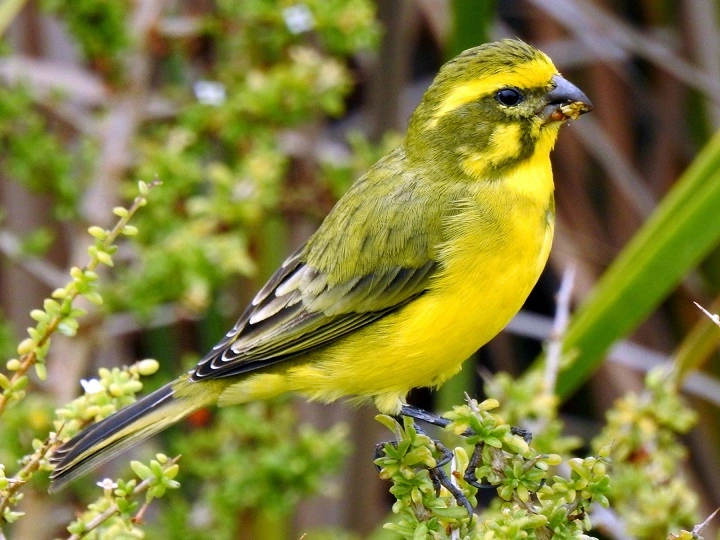The canary yellow bird is one of the most recognized and admired birds in the world. Known for its vibrant yellow feathers and melodious singing, this charming bird has long been a favorite among bird watchers, pet lovers, and nature enthusiasts. Whether found in the wild or kept as a pet, the canary yellow bird brings joy, color, and music to any environment.
In this article, we’ll explore the history, species types, behavior, diet, care tips, and symbolism of the canary yellow bird.
What Is a Canary Yellow Bird?
The term “canary yellow bird” typically refers to the domestic canary (Serinus canaria domestica), a small songbird that originates from the Canary Islands, Azores, and Madeira. Over centuries of breeding, these birds have developed into various types, with the yellow variant being the most iconic.
Their stunning yellow coloration, paired with a pleasant singing voice, has made them popular as cage birds since the 17th century. Today, they are among the most beloved pet birds globally.
Origin and History of the Canary Bird

The wild canary (Serinus canaria) was first discovered by Spanish sailors on the Canary Islands. These small, greenish-yellow birds were brought to Europe in the 1400s, where they quickly gained popularity among royalty and the elite.
Through selective breeding, different varieties emerged, including birds bred for:
- Color (yellow, orange, red)
- Song quality
- Feather shape or body form
The yellow canary became especially popular due to its bright color and cheerful appearance, eventually earning the name “canary yellow” in the color world.
Different Types of Canary Birds
There are three main categories of domestic canaries, with yellow canaries found in each group:
Color-Bred Canaries
Bred specifically for color, these canaries come in hues of yellow, red, and white. The yellow lipochrome canary is the most common and represents the classic canary image.
Song Canaries
These birds are bred for their unique vocal abilities. The American Singer, Spanish Timbrado, and Waterslager are known for their rich melodies.
Type Canaries
These are bred for specific body shapes or feather types, such as the Gloster, Crested, or Border Fancy canaries.
Appearance of the Yellow Canary
The canary yellow bird is small, typically measuring around 4.7 to 5.5 inches in length. It features:
- Bright yellow plumage (sometimes with white or greenish markings)
- Pinkish legs and feet
- A short, pointed beak
- Bright, alert eyes
Males are generally more vivid in color and are the better singers, especially during mating season.
Habitat and Behavior in the Wild
In the wild, canaries inhabit the Macaronesian islands and prefer semi-open habitats like shrublands and forests. They:
- Travel in small flocks
- Feed on seeds, small insects, and fruit
- Build nests in shrubs or trees using twigs, feathers, and moss
Wild canaries are more subdued in color compared to their domesticated relatives and sing simpler songs.
Diet and Care for Pet Yellow Canaries
Canaries are relatively low-maintenance, making them a favorite for beginners and seasoned bird keepers alike. Here are key care tips:
Diet
- Base food: High-quality canary seed mix
- Supplements: Leafy greens, boiled egg, fruits like apple or banana
- Cuttlefish bone: For calcium and beak maintenance
- Fresh water: Refilled daily
Avoid giving avocado, chocolate, caffeine, and alcohol, as these are toxic to birds.
Cage and Space
- Provide a cage at least 18 inches wide with horizontal bars for climbing
- Include perches of varying widths and materials
- Add toys and swings for enrichment
While canaries don’t need a cage mate, they enjoy visual stimulation and peaceful surroundings. Avoid placing the cage in drafty or noisy areas.
Singing and Activity
Male yellow canaries are prolific singers, especially when exposed to sunlight and a consistent daily routine. They may sing more when:
- Kept alone (without another male)
- Given enough rest at night
- Fed a balanced diet
They also enjoy short daily flights in a bird-safe room if allowed out of the cage.
Breeding Yellow Canaries

Breeding canaries requires some planning, especially if you’re aiming for specific colors like bright yellow. Key points include:
- Breeding season usually begins in spring
- Provide a nesting basket and nesting material
- Use a balanced breeding diet
- Female lays 3–6 eggs and incubates for about 13–14 days
Both parents may help feed the chicks once hatched. It’s essential to separate young birds once weaned to avoid overcrowding.
Health Considerations
Canaries are hardy but may suffer from:
- Mites (can cause itching and feather loss)
- Respiratory infections (due to drafts or poor hygiene)
- Egg-binding in females (requires immediate vet attention)
Maintain cleanliness, avoid exposure to smoke or aerosols, and consult an avian vet if signs of illness appear.
Symbolism and Cultural Significance
The canary yellow bird holds strong symbolism in various cultures:
- Hope and happiness: Due to its color and song
- Freedom: Represented in literature and art
- Warning: Historically used in coal mines as early danger detectors
The bird’s symbolism is often linked to positivity, sensitivity, and joyful energy.
Canary vs. Other Yellow Birds
Don’t confuse the domestic canary with wild yellow birds like:
- American Goldfinch: Smaller, with a black cap and wings
- Yellow Warbler: Found across North America, with a more warbled song
- Saffron Finch: Common in South America, more orange than yellow
The canary stands out due to its human-friendly nature, vocal range, and rich breeding history.
FAQs About Canary Yellow Birds
Are yellow canaries good pets?
Yes, they are easy to care for, beautiful to look at, and pleasant to hear. Great for beginners and experienced bird keepers.
Do female canaries sing?
Females may chirp, but only males typically sing full songs, especially during breeding season.
How long do yellow canaries live?
With proper care, canaries can live 8 to 15 years in captivity.
Can I keep more than one canary?
Yes, but avoid housing two males together, as they may become territorial.
How do I make my canary sing more?
Provide a consistent routine, sunlight, good food, and a stress-free environment. Avoid placing mirrors or other male birds nearby.
The canary yellow bird is more than just a pet—it’s a symbol of joy, music, and sunshine. Whether you’re drawn to its stunning color, soothing song, or rich history, keeping a yellow canary brings life to any space. With a little care and attention, you’ll enjoy a rewarding relationship with one of nature’s most delightful companions.


